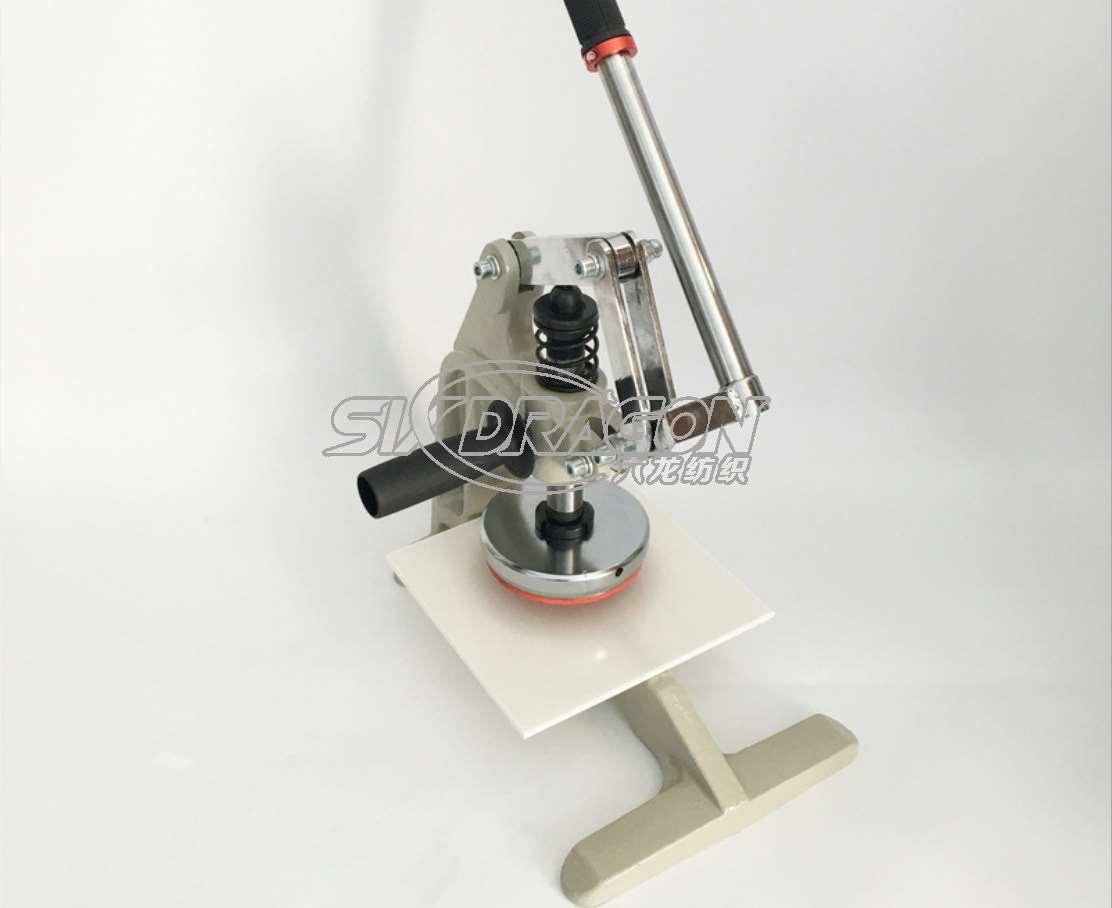
Analyze whether the yarn count and density are correct, cut the two warp yarns and two weft yarns along the four sides of the sample cloth into a rectangle or a square, measure the length and width (cm) with a steel ruler, and then calculate the area (square Cm), and weigh it on the balance (milligrams)
Weight per square meter of sample cloth = weight ÷ 1000 ÷ (area ÷ 10000) = weight ÷ area × 10;
1. Use calculation methods and tools together
For example: a sample cloth is 7 cm long, 8 cm wide, and weighs 772 mg, then the weight per square meter of the finished product of this sample cloth =772 ÷ (7×8) ×10=138 grams
Use a circular disk to cut the sampling knife, place the cloth sample underneath, rotate it clockwise a few times, take three circular sample cloths on the grey cloth (take it out of the cloth edge or cloth tail 20cm), and place it on the electronic balance to measure and measure Just provide specific data.
Grey cloth gram weight refers to the weight of fabric per unit area, generally expressed in grams per square meter (g/m2) or ounces per square yard (oz/Y2). The actual grammage is more related to cotton mix, yarn count, width of the finished product, and finishing process. Simple calculation of grammage:
1. Non-elastic cloth color and book weight calculation:
(Grey fabric warp density/warp yarn count + grey fabric weft density/weft yarn count)*24.3
For example: Calculate the weight of 20*16 / 128*60/63".
(128/20 + 60/16)*24.3≈246.6(g/m2)
Its weight is about 242-248g/m2.
Machine reed width/finished width* (machine density/warp count* 22.17 + grey cloth weft density/ weft count*21.4)
For example: Calculate the weight of C78〞 20*16+70D / 116*48
78/58*(116/20*22.17+48/16*21.4)≈259(g/m2)
Its actual weight is about 260-265g/m2.
Note: 78 "is the machine reed width, and the finished width is 58"
The simple calculation formula compares the weight of the grey fabric with the weight of the finished fabric sample. Under normal circumstances, the difference within ±5 grams is within the normal range. The big difference needs to be carefully analyzed. Based on our many years of experience, we can summarize several laws:
In general, a difference within ±5 grams is more normal.
If the difference is large, it needs to be analyzed. The principle is as follows: the difference of the combed tight yarn is slightly smaller.
(1) Polyester/cotton or polyester/nylon blended yarn and chemical fiber yarn have a conversion constant greater than 583.1 of pure cotton. For the same yarn, the number is larger, so the calculated weight is smaller than the actual weight;
(2) The strand is made of two or more single yarns twisted and twisted. Due to the twisting, the actual yarn count is thicker and the calculated weight is smaller than the actual weight. When the warp and weft yarns are all strands ,big different;
(3) Open-end spinning is short-fiber yarn, which is lost during the pre-treatment and scouring during printing and dyeing, and its calculated weight is heavier than the actual weighing;
(4) The weight after washing is about 5-6.5% larger;
(5) Due to the weight of the dye when dyeing dark colors, the calculated weight is slightly larger than the actual weighing;
(6) The calculated weight of bleached blanks and light-colored blanks is slightly larger than the actual weight;
(7) The weight after coating is 3-7%;
(8) The weight after sanding is 3.5-6% lighter;
① Excessive pre-treatment stretching will cause the weft density to decrease.
②The finished door is too wide.
③ Excessive alkali concentration and high temperature in subsequent processing will cause yarn fiber damage.
④When the raw yarn is purchased, the yarn is too thin, for example, the actual measurement of 40S is only 41S.
⑤The original yarn wears a lot during the weaving process, which will cause too much hairiness to fall off, resulting in a thinner yarn and a low weight.
⑥ Changing the color and peeling color during the dyeing process will result in large yarn loss and thinning of the yarn.
⑦During the singeing process, the excessive firepower of singeing causes the cloth surface to be too dry, and the yarn becomes thinner due to damage during desizing.
⑧Damage to the cloth surface in the finishing process of scratching and sanding.
Mr Jack(GM)
We woven fabrics manufacturer from china over 16 years,we weave/dye/print ourselves.
Any woven fabrics inquiries please contact us ,we supply one-stop full series woven fabrics service.
Mob/whatsapp/wechat:+8615988150362
Mail: director@sixdragontextile.com
Hangzhou Six Dragon Textile Co.,ltd
http://www.sixdragontextile.com
Contact: Jack Wang
Phone: +86-15988150362
E-mail: gm@sixdragontextile.com
Add: 杭州六龙纺织品有限公司 Yuhang,Hangzhou,Zhejiang,China